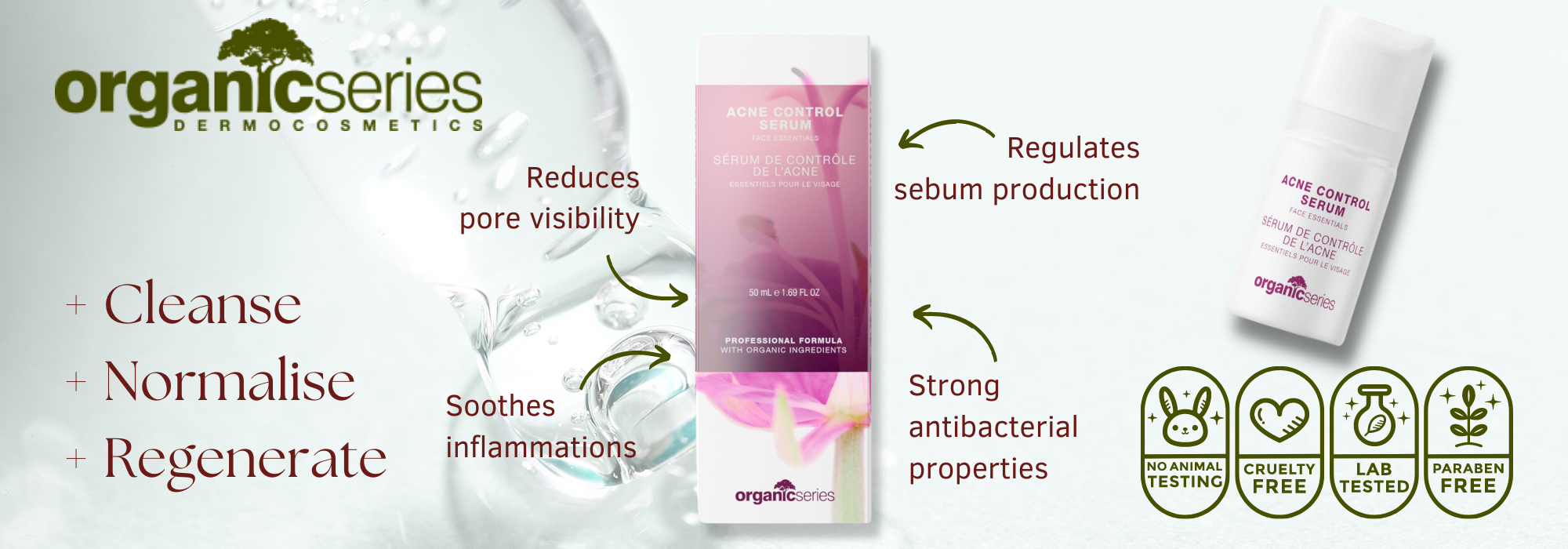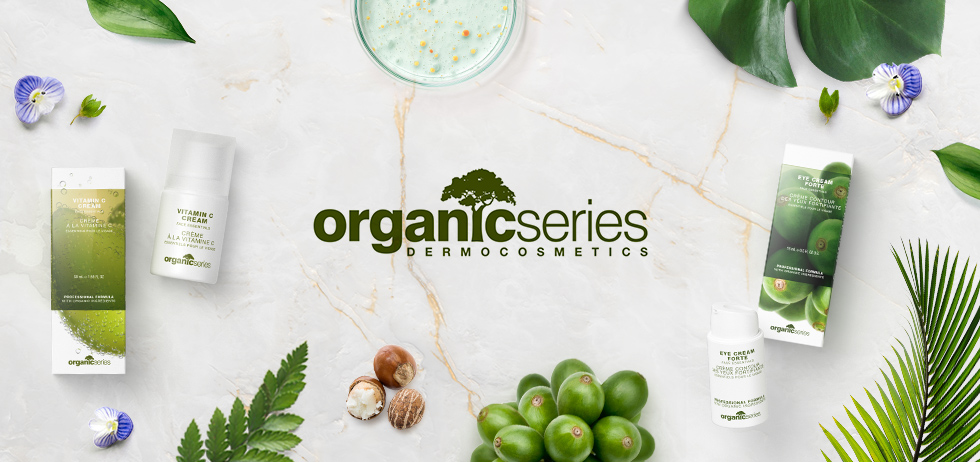
Find the Best Organic Skin Care for Teenagers in 6 Steps 🌿
Best organic skin care for teenagers: Teenage skin is a unique blend of youthful resilience and hormonal unpredictability. That often means breakouts, oiliness, dryness, or sensitivity—or a confusing combo of them all. So when you’re looking for the best organic skin care for teenagers, you want products that are effective, gentle, and safe. That usually means avoiding harsh chemicals, bleachy acids, and synthetic fragrances.
To help your teen build a healthy skincare habit that balances skin, protects from damage, and supports self‑confidence, here’s a step‑by‑step guide in 6 smart steps.
Step 1: Understand Teenage Skin & Why Organic Matters
The Teenage Skin Rollercoaster
-
Hormonal activity boosts oil production, which can clog pores and cause breakouts.
-
Acne and blackheads may flare up quickly post-puberty on the forehead, nose, and chin.
-
Sensitive, reactive skin is common—especially after trying strong, conventional products.
-
Many teenagers also start experimenting with makeup, which adds the need for gentle cleansing.
Why Organic Skin Care is a Smart Choice
-
Organic brands avoid synthetic chemicals like parabens, phthalates, DEA, and added fragrance—reducing irritation risk.
-
They use plant-derived actives (aloe, chamomile, green tea, etc.) gentle enough for young, delicate skin.
-
Quality brands are transparent about certifications (Soil Association, COSMOS), ingredient sources, and testing standards.
By choosing the best organic skin care for teenagers, you’re helping them build confidence in both skin and values—with formulations that minimize the risk of sensitization later in life.
Step 2: Build a Simple Daily Routine: Cleanse • Treat • Protect
Best organic skin care for teenagers: Effective teenage skincare isn’t complicated—it’s about consistency and the right basics. Here’s a clean routine using organic products:
1. Cleanser (Morning & Night)
-
Organic gel cleanser: Look for green tea, willow bark, or tea tree—cleanses gently but effectively.
-
Usage tip: Wet face with lukewarm water → pump 1–2 items → gently cleanse for 30 seconds → rinse and pat dry.
2. Treatment Serum (Morning or Night)
-
For breakout-prone skin: opt for 1%–2% salicylic acid extracted from willow bark, mixed with humectants like aloe or hyaluronic acid.
-
For dull or dehydrated skin: choose lightweight serums with niacinamide or vitamin C from plant sources like Kakadu plum.
3. Moisturiser (Essential for all types)
-
Even oily skin needs non-comedogenic moisturiser. Look for aloe vera, jojoba, calendula, or squalane formulas.
-
Night textures can be richer, but teens should stick to gel or light lotion in the morning—especially under makeup.
4. Sun Protection (Morning Only)
-
Choose a mineral SPF (zinc oxide or titanium dioxide) for broad protection. Gentler on young skin, and often less likely to clog pores.
This four-step daily routine provides balance, hydration, and protection—with minimal risk of irritation or over-layering.
Step 3: Pick Organic Ingredients That Work for Teenage Skin
Best organic skin care for teenagers: Even among organic products, ingredient choice is vital. Here’s what to look for (and avoid):
✅ Non-Negotiable Organic Ingredients
-
Green Tea Extract: Anti-inflammatory, antimicrobial, and excellent for oily or acne-prone skin.
-
Willow Bark (Natural Salicylic): Gentle exfoliation and oil control without over-drying.
-
Aloe Vera: Soothes redness, hydrates, and calms irritation.
-
Niacinamide (Natural Vitamin B3): Reduces inflammation, balances oil, and improves texture.
-
Jojoba or Squalane Oil: Mimics natural sebum, balances hydration, and supports barrier health.
-
Chamomile or Calendula: Gentle botanical soothing agents ideal for breakouts and sensitivity.
🚫 Ingredients to Avoid
-
Synthetic fragrances or essential oil blends (e.g., citrus oil) that may trigger sensitivity.
-
High concentrations of benzoyl peroxide, harsh alcohols, harsh exfoliants like AHAs over 10%.
-
Mineral oil, petrolatum, PEGs—heavy, pore-blocking ingredients that may worsen teenage skin.
Ingredient Secrets
Choose formulas with natural humectants (glycerin, hyaluronic acid), antioxidants (vitamin C, green tea), and barrier builders (ceramides, fatty acids). Avoid stripping ingredients—gentle balance is the key.
Step 4: Layer Smartly — What Goes On First?
Best organic skin care for teenagers: Teen skin can be unpredictable—so layering has to make sense. Here’s how to build it:
-
Cleanser – to remove makeup, oil, and impurities
-
Exfoliant or Serum – e.g., salicylic acid 1–2×/week or vitamin-based serum daily
-
Hydrating Toner (optional) – used to rehydrate if skin feels tight
-
Serum – niacinamide or antioxidant daily
-
Moisturiser – gel/cream daily, richer for p.m. as needed
-
SPF – every morning, any time they go outside
Teach your teen to wait about 60 seconds between layers. This ensures each layer absorbs and avoids dilution or pilling.
Step 5: Supercharge the Routine – Weekly Treatments
Best organic skin care for teenagers: Organic skincare isn’t just daily—it can also include gentle weekly boosts that don’t irritate:
1. Gentle Enzyme Mask (1×/week)
Use plant-based enzyme masks (papaya or pineapple). These exfoliate softly and brighten dull teenage skin.
2. Clay Mask for Congestion (1×/week)
Use kaolin or bentonite clay masks—but only on T-zone or area of concern. Avoid full-face use to prevent drying.
3. Spot Treatments Only as Needed
Use tea tree oil or salicylic spot treatments—but never apply over the entire face.
4. Koji or Licorice Brightening Masks
Used occasionally to fade post-acne marks in teens with sun protection during the day.
Step 6: Lifestyle & Supportive Habits
Best organic skin care for teenagers: Great skin isn’t just what’s on the face—it’s what’s in your habits:
💤 Adequate Sleep
Teen skin repairs overnight. Impaired sleep can worsen acne and texture.
🥗 Nutritious Diet
Encourage whole foods, leafy greens, lean protein, and hydration. Reduce sugar and dairy if they contribute to breakouts.
🚰 Hydration
At least 1 L of water daily helps flush toxins and supports skin barrier health.
🚫 No Picking
Acne scars are a risk—empower teens to leave blemishes alone or use non-irritating spot gel.
🌿 Stress Management
Encourage exercise, mindfulness, hobbies—stress triggers cortisol, which worsens hormonal acne.
Common Skin Problems in Teenagers – And Organic Solutions
Best organic skin care for teenagers: Teenagers often face a unique mix of skin challenges due to hormonal changes. Fortunately, organic skincare can address these issues naturally and effectively.
1. Acne & Breakouts
One of the most common concerns, especially around the forehead, cheeks, and chin.
Organic Solution:
-
Use gentle cleansers with tea tree, willow bark, or rosemary.
-
Spot treat with manuka honey, zinc, or aloe-based gels.
-
Exfoliate gently once a week to keep pores clear.
2. Oily Skin
Excess sebum causes shiny skin and clogged pores.
Organic Solution:
-
Look for non-comedogenic moisturisers with grapeseed oil or squalane.
-
Use toners with witch hazel, niacinamide, or green tea.
3. Dry Patches
Especially common in teens with eczema or during winter months.
Organic Solution:
-
Choose richer moisturisers with shea butter, calendula, or ceramide-rich formulas.
-
Avoid foaming cleansers and alcohol-based products.
4. Combination Skin
Dry cheeks but oily T-zone? Many teens have combo skin.
Organic Solution:
-
Use a balancing cleanser and multi-mask: clay mask on T-zone and hydrating mask on cheeks.
-
Stick with lightweight lotions during the day and richer creams at night.
Choosing the Right Organic Skincare Products (UK Focus)
Best organic skin care for teenagers: Not all products labeled “organic” are created equal. Especially in the UK market, look for products with certified labels and ethical sourcing.
Look for Certifications:
-
Soil Association Organic – The UK’s leading organic certification body.
-
COSMOS Organic – A European-wide organic standard.
-
Cruelty-Free International / Leaping Bunny – For ethical, non-animal tested skincare.
UK-Friendly Organic Skincare Brands for Teenagers:
-
OrganicSeries UK – High-quality, medical-grade organic skincare designed for sensitive and young skin.
-
Green People – Offers teen-specific ranges like “Oy!”
-
Pai Skincare – Excellent for sensitive skin, especially teenage girls with reactivity.
-
Evolve Organic Beauty – Fresh, small-batch skincare with active botanicals.
-
UpCircle – Sustainable, natural, and great for eco-conscious young users.
Choose local or UK-based brands to ensure quality control, availability, and reduced environmental impact.
How to Introduce Teenagers to Organic Skincare (as a Parent or Guardian)
Best organic skin care for teenagers: Helping your teen build a healthy skincare habit doesn’t have to feel like a chore. Here’s how to make it easier:
💬 Educate, Don’t Dictate
Explain why harsh products can do more harm than good. Encourage them to read labels and choose clean ingredients.
🧼 Keep It Simple
Most teens don’t need a 10-step routine. Start with just 3 steps: cleanse, moisturise, protect.
📅 Build a Routine
Help them attach skincare to an existing habit (after brushing teeth, before school, or after sports). Consistency matters.
💚 Make It Fun
Let them choose products based on scent, texture, or packaging preferences (within clean options). Empowering choice builds good habits.
🧴 Avoid Product Hopping
Stick with one system for at least 6–8 weeks. Constant switching can lead to irritation or confusion about what’s working.
Mistakes to Avoid in Teen Skincare
Best organic skin care for teenagers: While setting up a skincare routine for teens, avoid these common pitfalls:
❌ Over-Exfoliation
Using harsh scrubs, acids, or tools daily can destroy the skin barrier. Once or twice a week max.
❌ Skipping SPF
Even oily or acne-prone skin needs daily sun protection. Go for non-comedogenic mineral SPFs.
❌ Using “TikTok Trends”
Social media can promote questionable hacks—like using toothpaste on pimples. Always check ingredients and consult reliable skincare sources.
❌ Sharing Products
Bacteria spreads. Encourage each teen to have their own products and wash hands before use.
Frequently Asked Questions (FAQs)
🟢 What age should teenagers start using skincare?
Generally from age 12–13, especially if oiliness or breakouts begin. Start with a simple organic cleanser and moisturiser.
🟢 Can teenagers use serums?
Yes—but only light, natural ones. Avoid strong acids or retinol. Go for niacinamide, vitamin C, or hydrating serums with aloe and hyaluronic acid.
🟢 Is oil-based skincare okay for teenage acne?
Yes! Oils like jojoba or squalane are non-comedogenic and help balance sebum. Avoid heavy or synthetic oils like mineral oil.
🟢 How long until results appear?
With consistent use of quality organic skincare, noticeable results can appear in 3–6 weeks. Be patient and stay hydrated.
Final Thoughts: Building Healthy Skin for Life 🌱
Investing in the best organic skin care for teenagers isn’t just about managing breakouts or oily skin—it’s about creating a sustainable, skin-positive approach that supports them for years to come.
By introducing safe, plant-powered products free of harsh synthetics, teens can enjoy:
✅ Clearer skin with fewer breakouts
✅ Balanced hydration and reduced sensitivity
✅ Confidence and control over their skincare choices
✅ Eco-conscious habits that respect both skin and planet
So whether you’re a teen searching for the right products or a parent guiding the journey, organic skincare is the gentle, smart way forward.
Best organic skin care for teenagers: Ready to build your teen’s organic skincare routine?
Explore dermatologist-formulated, eco-certified options at OrganicSeries.co.uk—where science meets the purity of nature.
Expert recommendation for best organic skin care for teenagers
Organic Series Best Organic Skin Care for Teenagers

More inspiration for best organic skin care for teenagers
Follow Organic Series UK on instagram and facebook for more inspiration, expert tips on skin care for teenagers and special discount codes!



